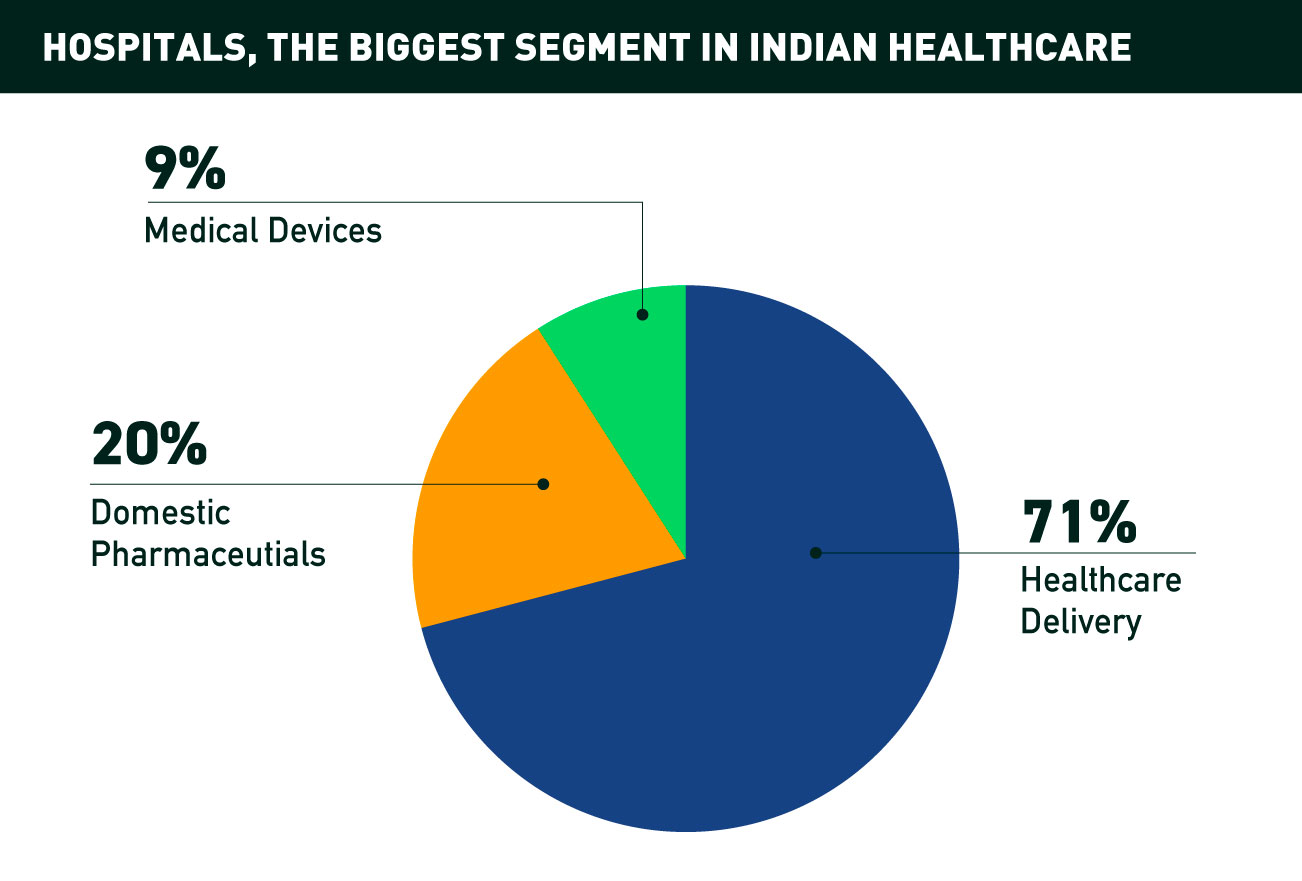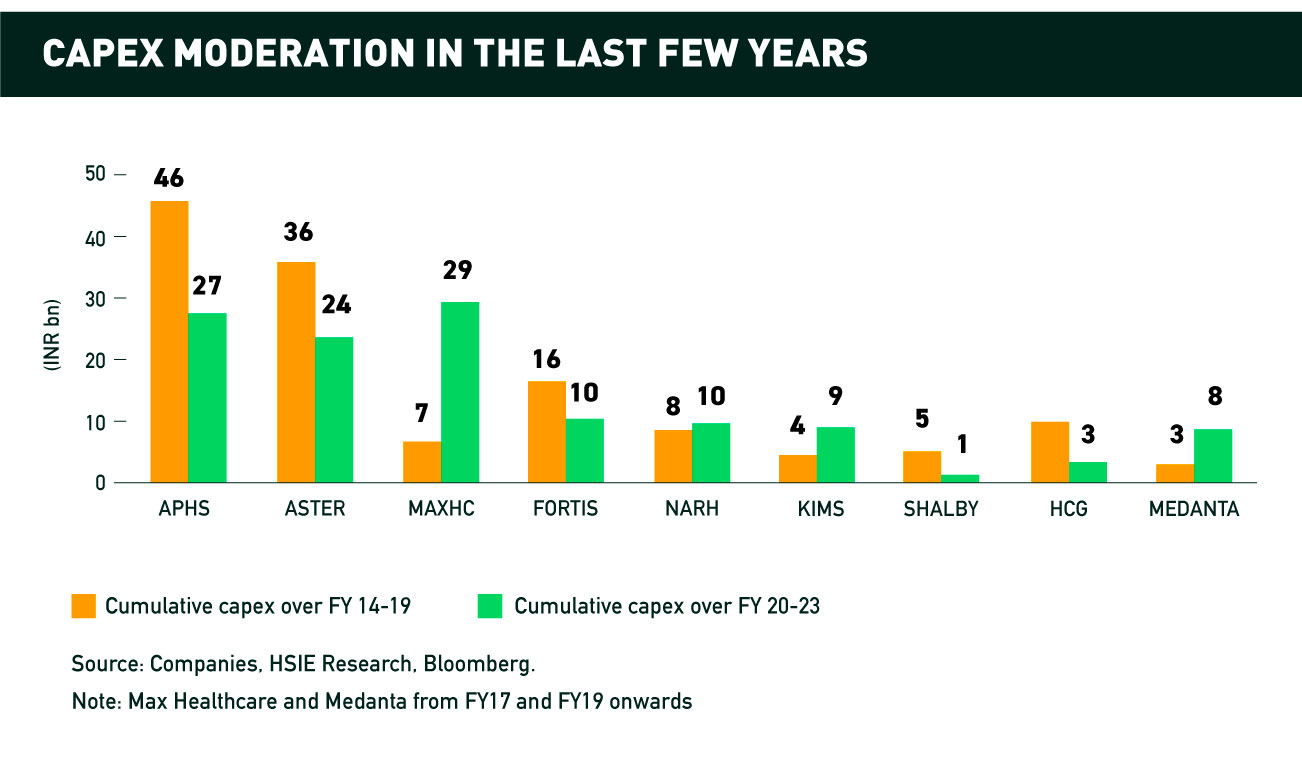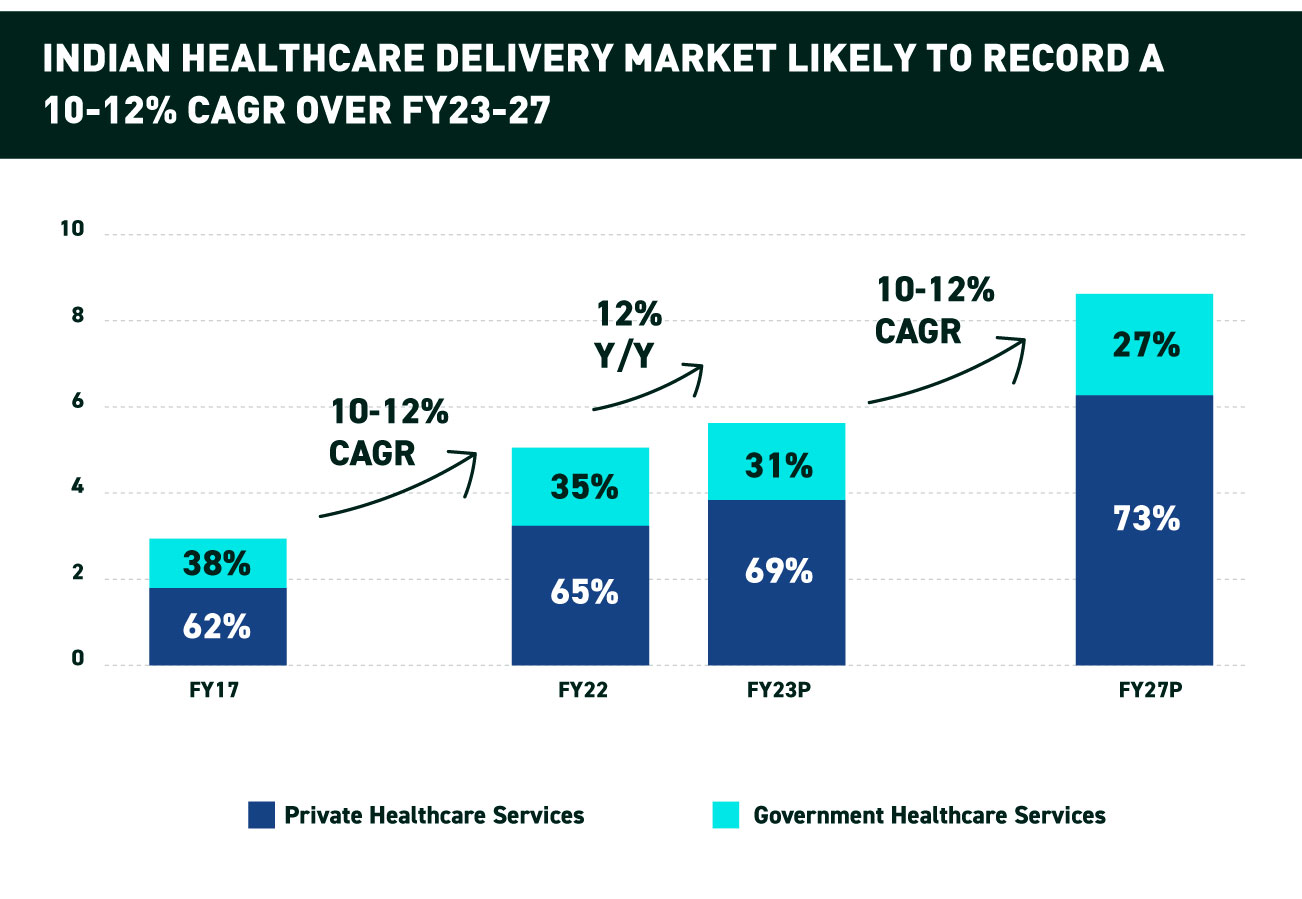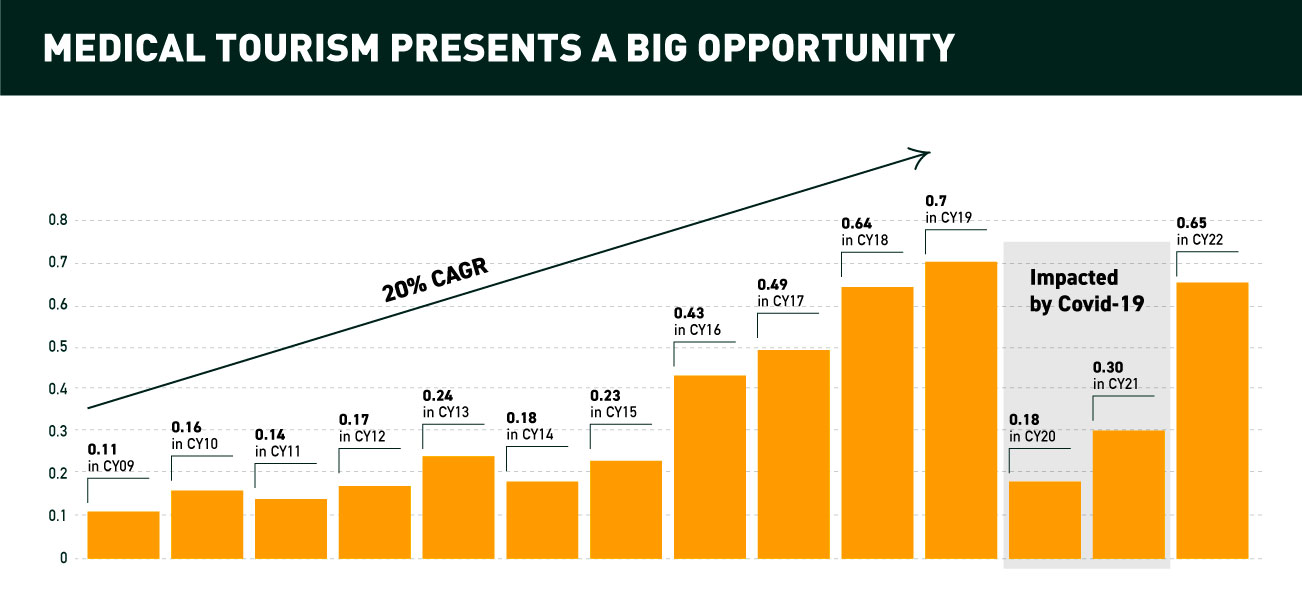India’s Healthcare: A Crossroads of Progress and Challenges

Introduction
The Indian healthcare industry is at a pivotal juncture, characterized by significant improvements yet facing persistent challenges. As of 2022, India’s healthcare market was valued at approximately $372 billion, with a compound annual growth rate (CAGR) of 22%. The country boasts over 1.2 million registered doctors and more than 1.6 million registered nurses. This analysis dives into both sides of the coin, exploring the industry’s current state and its exciting growth potential.

Affordability: A Hurdle for Many
Despite a growing middle class, a significant portion of the population struggles to access quality healthcare. This is primarily due to low household income, with a staggering 65% of households earning less than Rs 2 lakhs annually in 2022 (CRISIL data). This translates to one of the world’s lowest healthcare expenditures per capita, limiting accessibility for many.

Infrastructure Concerns: A Strain on Resources
Further hampering accessibility is India’s underwhelming healthcare infrastructure. The doctor-patient ratio falls short of the WHO’s recommendation (1:1445 vs 1:1000), and bed density per 10,000 people remains low. This highlights the strain on existing resources and the need for significant infrastructure development.

Bright Spots on the Horizon: Drivers of Growth
Despite these challenges, several factors promise a bright future for Indian healthcare. Rising incomes and a burgeoning middle class (projected to reach 583 million by 2025) fuel the demand for high-quality care. Additionally, rapid urbanization (with nearly 40% of the population expected in urban areas by 2030) creates a need for advanced healthcare facilities in cities.

A significant boost comes from the rise of health insurance penetration, currently at 37% (2021). This, along with government initiatives like the Ayushman Bharat scheme aiming to provide health coverage to over 500 million people, improves healthcare accessibility for a wider population segment.

Medical Tourism: A Lucrative Opportunity
India’s healthcare sector also benefits from a thriving medical tourism industry, valued at $9 billion in 2020. The country’s reputation for affordable, quality care attracts patients worldwide. According to the Ministry of Tourism, of foreign tourists arriving in India, the proportion of medical tourists grew from 2.2% (0.11m tourists) in CY09 to 6.4% (0.7m) in CY19. COVID-19 travel restrictions curtailed medical tourists sharply in 2020 to 0.18m. This figure, however, has since considerably recovered, with arrivals in 2022 (~0.65m tourists) showing a robust growth. This sector is poised for further growth, with the government aiming for $12 billion in revenue by 2026 through initiatives like the “Heal in India” program.

Furthermore, the past decade witnessed a surge in capital expenditure (capex) by healthcare companies. Between FY14 to FY19, major healthcare players invested significantly in expanding their infrastructure. Notable investments include Apollo Hospitals’ ₹ 1,500 crore expansion plan and Fortis Healthcare’s strategic acquisitions to enhance capacity. These capex projects are now coming to fruition, resulting in the addition of new hospitals, advanced diagnostic centers, and specialty care units. This influx of infrastructure is expected to alleviate some of the industry’s capacity constraints and improve the overall quality of care. Though the pace of capex has tapered off, the execution of the previously done capex will prove to be instrumental for the industry’s growth.
Conclusion: A Multi-Decadal Growth Story with Work to Be Done
The Indian healthcare industry stands on the precipice of a significant transformation. While boasting a significant market size and impressive growth rate, affordability remains a hurdle for many. However, rising incomes, a growing middle class, and rapid urbanization are creating a surge in demand for quality healthcare.
The COVID-19 pandemic served as a stark reminder of the importance of robust healthcare infrastructure. Countries with strong systems were better equipped to handle the crisis. This experience has undoubtedly accelerated efforts to strengthen India’s healthcare system.
Looking ahead, India’s healthcare industry presents a multi-decadal growth story. Continued efforts to enhance accessibility, affordability, and quality will be paramount in ensuring this growth benefits all segments of the population. This will require robust infrastructure development and a renewed focus on preventative care and public health awareness – crucial elements for building a resilient healthcare ecosystem that can effectively address future health challenges.
Disclaimer: Investment in securities market are subject to market risks. Read all the related documents carefully before investing. Registration granted by SEBI, membership of BASL (in case of IAs) and certification from NISM in no way guarantee performance of the intermediary or provide any assurance of returns to investors.
The content in these posts/articles is for informational and educational purposes only and should not be construed as professional financial advice and nor to be construed as an offer to buy /sell or the solicitation of an offer to buy/sell any security or financial products.Users must make their own investment decisions based on their specific investment objective and financial position and using such independent advisors as they believe necessary.
Windmill Capital Team: Windmill Capital Private Limited is a SEBI registered research analyst (Regn. No. INH200007645) based in Bengaluru at No 51 Le Parc Richmonde, Richmond Road, Shanthala Nagar, Bangalore, Karnataka – 560025 creating Thematic & Quantamental curated stock/ETF portfolios. Data analysis is the heart and soul behind our portfolio construction & with 50+ offerings, we have something for everyone. CIN of the company is U74999KA2020PTC132398. For more information and disclosures, visit our disclosures page here.





